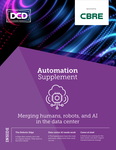The data center is changing but far from over.
The reasons for considering alternatives to the data center are valid: it costs too much to run, it’s challenging get staff with the right skills and the idea of a “center” doesn’t fit our idea of a highly distributed world, where users, applications and data need to be everywhere. The solution is to send everything to the cloud, right? Because everything as a service will be cheaper, better and someone else’s problem. Maybe.
Complex cloud economics
According to analyst Dell’Oro Group, after a year of slow growth in 2020, global expenditure on data center infrastructure is expected to grow by 10 percent in 2021.
There are still some powerful reasons why the data center isn’t over and still won’t be in ten years.
Cloud economics are complex in the ways that providers charge. Some things are less expensive to do off-premises (colocation facility or cloud), while others may end up costing more.
There are reasons why most productivity applications will soon run in the cloud and most of them start with a $ sign, but there are different factors in play with business-built applications serving customers and mission-critical applications. It’s not just about the usage but also considerations of control over strategic assets.
Building and managing highly distributed yet reliable cloud-native applications take time and new skills. Many applications will continue to run as they were built years ago, which introduces additional considerations.
Of course, edge computing, IoT and cloud will also require organizations to start rethinking the architecture of the data center, but whether data and applications are on or off-premises, in a company’s data center or a hyperscaler’s data center, the need for control and remediation doesn’t go away.
All of which is why the data center – that part of the IT operation that is too important to let go – will remain central to IT strategy for many companies. For most enterprises, digital transformation is a long evolution, a blended approach that will see phased migration of applications and data to the cloud and a mix of legacy and cloud-native services for the foreseeable future.
Regardless of architecture, the challenges data centers face today are likely to persist: finding people with the right skills, keeping a lid on costs and solving problems quickly – or better, still preventing them from arising.
Paying human beings to pay attention to a noisy set of alerts isn’t a good use of their time or money. It’s disengaging, routine work that doesn’t motivate or inspire.
Automating Day 2 operations is about simplifying the process of finding the needle in the haystack. The overall goal is to operate the network as a single system. That means first taking a unified, intent-based approach to design. Second, it means implementing open networking principles and multi-vendor support that reflect the diversity of customers’ environments and the reality of their existing investments.
The network that the design team intended on Day 0, and the engineering team deployed, should be the same one that the operations team runs on Day 2. The combination of automated closed-loop and intent-based analytics eliminates common day-to-day pitfalls of manual infrastructure management as well as lengthy and frustrating troubleshooting hunts. Managing the network cohesively enables operations teams to do their jobs more effectively and frees them up to focus on more rewarding, productive work.
Lost in translation
Unless a holistic view is taken that includes what happens and what must change to support new needs after the install, whatever the architects intended can get lost in translation. This can cause an operational patchwork that consumes valuable human resources.
Here are just some of the operational challenges faced by the network team:
- Cross-functional finger-pointing—not all problems are network problems
- Length of time to roll back a change when issues arise
- Change review is onerous—delays new services and important fixes
- Too many CLI touchpoints for just one change
- Lack of visibility to grey failures to get ahead of device issues and prevent user impact
- Security patches and NOS updates can take long to plan and require (or trigger) outages
- Multi-vendor environments create challenges in setup, visibility, and trouble identification
- Networking skills scarcity can make hiring challenging.
Failure to think about Day 2 also costs organizational agility. Let’s take just one of the challenges above: rollback time.
Imagine a business is launching a new service that has been months in the planning. On the day of go-live, a fault develops, and multiple virtual machines misconfigured with duplicate MAC addresses cause intermittent reachability issues, breaking the application. How long would that take to find and fix? Weeks, longer? In any case, marketing has had to postpone the launch. A server alert should be able to identify the problem, and it could have been rolled back in under 60 seconds.
The data center is evolving but there’s no question that it’s here to stay. Automating data center operations all the way to Day 2 can have a dramatic impact on the time and uptime of running a data center. By reducing complexity, improving response times and minimizing the risks of delays and interruption to business, data center automation also promises to eliminate opportunity cost.





